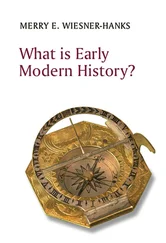R. Nisbet Bain - The Cambridge Modern History
Здесь есть возможность читать онлайн «R. Nisbet Bain - The Cambridge Modern History» — ознакомительный отрывок электронной книги совершенно бесплатно, а после прочтения отрывка купить полную версию. В некоторых случаях можно слушать аудио, скачать через торрент в формате fb2 и присутствует краткое содержание. Жанр: unrecognised, на английском языке. Описание произведения, (предисловие) а так же отзывы посетителей доступны на портале библиотеки ЛибКат.
- Название:The Cambridge Modern History
- Автор:
- Жанр:
- Год:неизвестен
- ISBN:нет данных
- Рейтинг книги:4 / 5. Голосов: 1
-
Избранное:Добавить в избранное
- Отзывы:
-
Ваша оценка:
- 80
- 1
- 2
- 3
- 4
- 5
The Cambridge Modern History: краткое содержание, описание и аннотация
Предлагаем к чтению аннотацию, описание, краткое содержание или предисловие (зависит от того, что написал сам автор книги «The Cambridge Modern History»). Если вы не нашли необходимую информацию о книге — напишите в комментариях, мы постараемся отыскать её.
The first series was planned by Lord Acton and edited by him with Stanley Leathes, Adolphus Ward and George Prothero.
The Cambridge Modern History Collection features all five original volumes:
Volume I: The Renaissance
Volume II: The Reformation, the End of the Middle Ages
Volume III The Wars of Religion
Volume IV: The 30 Years' War
Volume V: The Age of Louis XIV
The Cambridge Modern History — читать онлайн ознакомительный отрывок
Ниже представлен текст книги, разбитый по страницам. Система сохранения места последней прочитанной страницы, позволяет с удобством читать онлайн бесплатно книгу «The Cambridge Modern History», без необходимости каждый раз заново искать на чём Вы остановились. Поставьте закладку, и сможете в любой момент перейти на страницу, на которой закончили чтение.
Интервал:
Закладка:
Savonarola staked the truth of his inspiration on the recovery of Pisa; all that Florence had lost should be restored, and much that she had never possessed should be her prize. The prophet’s reputation would necessarily rise or fall with every turn in the Pisan war. Amid all the new-born enthusiasm for liberty at Florence there was no sympathy for the Pisans, who so bravely asserted theirs. Sympathetic as Savonarola was by nature, while he had not been born to a share in the old Florentine hatreds, not a word escaped his lips on behalf of the revolted town. Towards the close of the war Florentines of the upper classes felt for the ruined peasantry and the women and children a pity which they scarcely dared express; but, when at this earlier stage a solitary canon of the Cathedral asserted that Pisa had a right to liberty, he was severely punished by the Piagnone government. The idea of liberty stretched but a yard beyond the four quarters of Florence, and even there its currency was conditional on its being stamped with the hallmark of her guilds; in the new constitution no reforms bettered the condition of her extensive territory.
Charles VIII had left Italy never to return, but the autumn of 1496 witnessed another flying royal visit. The King of the Romans had been induced by Milan and Venice to enter Italy in favour of the League. He came, however, as little more than Ludovico Moro’s condottiere; he had few troops and less money; “he had sailed,” as the saying went, “with a short supply of biscuit in his galley.” His wider schemes shrank to the relief of Pisa. In welcoming a King of the Romans the Pisans felt a glow of their old Ghibelline enthusiasm. They had thrown the Florentine lion from their bridge into the Arno, and a statue of Charles VIII was reigning in its place; they now served the French king as they had served the lion. From Pisa Maximilian sailed to take Leghorn; its capture must have sealed the fate of Florence, for it was her last port, the last gate open to her French allies. But Leghorn was stoutly held. From the village of Impruneta was brought to Florence the sacred figure of the Madonna, and, as it reached the Ponte Vecchio, a horseman brought the news that a storm had scattered Maximilian’s ships, and that a French squadron with supplies had broken the blockade. To Florentine imagination, kept at fever-heat by prophecy, this seemed a miracle wrought by Savonarola’s intercession; and the belief became a certainty, when it transpired that the French had left Marseilles on the very day on which the Florentines had sent to Impruneta. The French alliance recovered its popularity; Maximilian hurried back to Tyrol, leaving Italy to wonder or to laugh.
Savonarola’s fame was doubled by the salvation of Leghorn, and the close of the year 1496 was perhaps its zenith. In the previous spring a group of aristocrats of secondary importance had formed an electoral ring to reject all opposition candidates. This in Florence was a criminal offence; they were condemned by the Eight, and appealed to the Council without success, while their leaders were sentenced to life imprisonment. Then died Piero Capponi, shot before a paltry fortress in the Pisan hills. So fierce was faction that the people rejoiced at Capponi’s death. Yet he was the hero of 1494, a passionate champion against French and Medici, the most, perhaps the only, capable soldier and statesman in the city. Nor was he an uncompromising opponent; he had cooperated with Savonarola in saving the Mediceans, and his attitude towards the Friar had not been consistently unfriendly. But marked character and high ambitions the Florentine love of equality could not brook; the ideal was a citizen who did everything that he was asked to do, and nothing very ill or very well.
Capponi’s death disorganised his party, and the year closed with triumph for the Piagnoni, for Francesco Valori was elected Gonfalonier for January, 1497. In the long run Valori’s leadership was no blessing to his party, but as yet he was the people’s darling. One of the few citizens above suspicion of corruption, he was devoted heart and soul to the service of the State. He had no children; his leadership could not found a dynasty. It mattered little to humbler citizens that he was violent and eccentric, that his tongue was biting and abusive, and his temper impatient of contradiction; inasmuch as the victims of these qualities were their opponents. Valori used his two months of office without stint or scruple in the Piagnone cause. None but Valori’s partisans were elected to salaried offices, or allowed to address the Council; every measure prepared by the Valori group must pass, however unpalatable to the public. The malcontents who had not paid their taxes were excluded from the Council; the age-limit was lowered to twenty-four in the hope that younger men, who had not tasted the loaves and fishes of the Medici, would favour the righteous cause. Many of the Franciscans who had preached against Savonarola were summarily expelled. Severe penalties were imposed upon priests and gentry who should hold intercourse with the Cardinal de1 Medici at Rome.
Valori overshot his mark. Under the existing system of election the composition of the Signoria would immediately reflect the current of opinion in the Council, and from the close of Valori’s term of office there were unmistakable signs of reaction. His successor was Bernardo del Nero, who had succeeded Capponi in the leadership of the aristocrats. This had a peculiar significance, for Bernardo was a veteran Medicean, opposed indeed to Piero’s methods, but devoted to the house. The leaders of the Bigi had been regarded with as much hostility by the Arrabbiatl as by the populace; but on Capponi’s death the former, having no chief equal in talent to Valori, had turned to Bernardo. The union was still very far from complete, but it was a symptom that the oligarchy might be driven back to the monarchy for shelter against the people. Valori’s character and conduct, which even alienated other Savonarolist leaders, had not, perhaps, been the only cause of the reaction. Pisa seemed as far as ever from recapture; the last French troops were leaving Italy; pitiless rain had fallen for eleven months, and the harvest of 1496 had been a total failure. In the early months of 1497 people dropped dead of famine in the very streets. The government did its best to supply grain to the poor; but once and again women were crushed to death in the throng that besieged the relief-office. Plague trod on the heels of famine. Savonarola’s sanguine prophecies seemed a mockery to the poor. The rest of Italy, he repeated, would be scourged, but Florence, the elected city, would be saved. Now that the barbarian had retired, Italy had resumed her normal aspect; the Pope and the tyrants were enjoying their escape; only Florence had suffered from the flood, only Florence was shorn and starving.
The ruling classes, whether Arrabbiati or Piagnoni, were so occupied by faction that they forgot the possibility of a Medicean revival. There was no Medicean party, no appreciable number who would actively move in Piero’s favour; but while the upper classes resented Valori’s drastic methods, the poor were saying that under the Medici they had been better off. The hospitable house of the genial Cardinal was open to all Florentines who visited Rome on business or for pleasure; Valori had failed to check this practice, which slowly but surely sapped the republicanism of the aristocracy. A handful of citizens believed that they could work upon the general discontent, and invited Fra Mariano, the Augustinian, to Florence to preach against Savonarola and to act as intermediary between Piero and his friends. The conspirators relied upon the support of the League. Ludovico il Moro indeed drew back, feeling that there could be no sure friendship between himself and Piero. Venice however gave support, in the hope of procuring the cession of Pisa. Piero, sanguine as all exiles are, believed that indefinite discontent with the republic implied definite loyalty towards himself, and with some 1300 troops, led by the Orsini captain Alviano, moved from Siena upon Florence; but for heavy rain he might have surprised the Porta Romana at early dawn (April 29, 1497). Bernardo’s term of office was just closing, and the new Signoria was hurriedly elected as being more trustworthy. The reported Medicean partisans jwere secured in the Palazzo Puhblico, the gates were guarded, the condottieri set in motion. Piero, hearing no rumours of a rising, retired upon Siena. No favour had been shown to the Medici, but few obeyed the order to join their companies; only the personal enemies of Piero took up arms, and that when he was already retreating. The citizens at large were too indifferent to risk their interests, when either aristocrats or Medici might prove victorious.
Читать дальшеИнтервал:
Закладка:
Похожие книги на «The Cambridge Modern History»
Представляем Вашему вниманию похожие книги на «The Cambridge Modern History» списком для выбора. Мы отобрали схожую по названию и смыслу литературу в надежде предоставить читателям больше вариантов отыскать новые, интересные, ещё непрочитанные произведения.
Обсуждение, отзывы о книге «The Cambridge Modern History» и просто собственные мнения читателей. Оставьте ваши комментарии, напишите, что Вы думаете о произведении, его смысле или главных героях. Укажите что конкретно понравилось, а что нет, и почему Вы так считаете.












